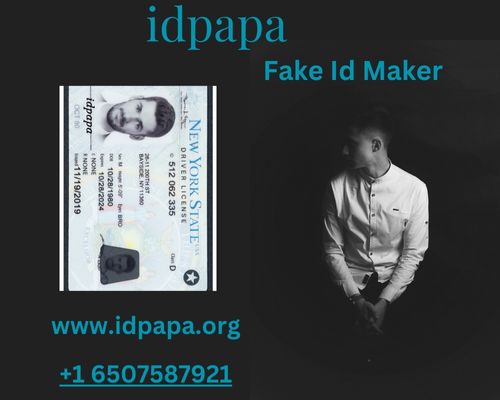Recognizing fake IDs, both from the front and back, can be challenging as counterfeiters have become increasingly skilled at creating convincing replicas. However, there are several techniques and security features to look for when verifying the authenticity of an ID. Here's how to recognize Fake Ids Front and Back from both sides:
Front of the ID:
-
Look for Holograms or Optical Variable Ink: Many official IDs, such as driver's licenses and passports, have holographic or optical variable ink elements on the front. Tilt the ID to see if the hologram changes or the ink shifts in color. Fake IDs often lack this feature or have poorly replicated versions.
-
Check for Microprinting: Real IDs often include tiny text or patterns that are difficult to replicate using standard printing methods. Use a magnifying glass to inspect for microprinting, which is typically crisp and clear on genuine IDs but blurry on fakes.
-
Examine the Photo: Compare the photo on the ID with the person presenting it. Look for signs of tampering, such as glued-on or retouched photos. Ensure that the photo matches the physical description of the individual.
-
Verify the Signature: Check the signature on the ID. Genuine IDs usually have a signature that looks handwritten, while fake IDs may have printed or forged signatures. Pay attention to inconsistencies in the signature.
-
Inspect the Raised Print: Many official IDs have elements with raised printing, like the text or the individual's date of birth. Run your fingers over these areas to feel for the raised texture, which may be missing on fake IDs.
Back of the ID:
-
Check for UV Printing: Some IDs have UV ink or printing on the back that is invisible under normal light but becomes visible under ultraviolet (UV) light. Use a UV light source to verify the presence of UV features.
-
Scan the Barcode: If the ID has a barcode, use a barcode scanner or a mobile app designed for ID verification to scan it. Genuine IDs will typically yield accurate information, while fake IDs may produce errors or incorrect data.
-
Inspect the Perforations: Some IDs have perforations or cut-out patterns on the back. Ensure that the perforations are neatly cut and align with the design of the ID. Poorly executed perforations can be a sign of a fake.
-
Verify the Holographic Overlay: Some IDs have a transparent holographic overlay on the back that can be seen when held up to the light. Authentic overlays will often contain intricate patterns and designs. Fakes may have simplified or poorly detailed overlays.
-
Examine the Back for Tampering: Look for signs of tampering, alterations, or inconsistencies on the back of the ID, such as glued-on or handwritten information. Genuine IDs have uniform and professionally printed content.
-
Check for State-Specific Features: Some states include unique features on the back of their IDs, such as watermarks, state symbols, or specific security elements. Familiarize yourself with the features specific to your area.
Remember that fake IDs can vary in quality, and some counterfeits are exceptionally convincing. If you have any doubts about the authenticity of an ID, consider using a professional ID scanner or consult with law enforcement or relevant authorities for further verification. Training and experience in ID verification can be invaluable in detecting counterfeit IDs effectively. For more information visit IDPAPA


No comments yet